Why are you running?
Running became my way of navigating the pandemic.
A year into working from home, I found myself frustrated by something I couldn't quite name. On paper I liked my job, my apartment, my roommates, and my relationship. We were getting through times of isolation together as best as we could. I felt grateful.
Yet I repeatedly asked, while sitting at my desk 3 feet away from my bed with a feeling of the walls slowly closing in, "What should I want now?". The inner voice, wanting to prove that it can do hard things, said, "You should run a marathon". In April 2021, I bought my first pair of proper running shoes and hit the pavement. In June, I was signed up for the San Francisco Marathon, my home race.
At the beginning, the marathon is so daunting. Then, day by day, week by week, you find that you can run farther and faster. It's almost like gaining a superpower; a ten mile run, once seemingly impossible, becomes no big deal. Training becomes a ritual, and the measurable progress is addictive.
From the outside, my family and friends were probably asking, "Why are you running?”
I loved having something to strive for and getting outside each day into Golden Gate Park. I had always enjoyed physical exercise in the form of mountain biking and CrossFit but surprised myself with how much I enjoyed the daily process of training for a marathon.
The biggest test came a month before the race: an 18-mile run with 14 miles at “marathon pace”. I held a 6:48 min/mi pace, opening my eyes to the possibility of a sub-3 hour finish (6:50 min/mi pace) and Boston Marathon qualification. No longer content with just finishing, I now had a specific time in my sights. At the San Francisco Marathon in September 2021, the race pushed me to my limits and I finished in 2:58:00, 2 minutes under the qualifying standard! In November, I found out that I had officially punched a ticket to Boston.
Initial training progression
Just past the halfway point of the 2021 San Francisco Marathon.
Fast forward through 2022 and I was making continuous progress in both running and my job. I completed the Boston Marathon and ran a personal best 2:39:43 (6:05 min/mi pace) at the Chicago Marathon in October. In the same month, I was promoted at work and finalized long-term engineering specs. I was all in, and it felt great.
Continuous forward progress in 2022.
One mile to go at Boston.
Locking in to stay under 2:40 for the final 5 miles of the 2022 Chicago Marathon.
To the depths
After the Chicago Marathon, I took a week off from running. I jumped into work on a new high pressure project and got sick in the first two weeks. Never fully recovering from the initial illness, I tested positive for COVID on November 8, 2022.
What began as a mild case quickly escalated into a debilitating fatigue and brain fog. I had previously caught COVID in January 2022 and was soon back to normal training so I thought this would be no big deal.
Two weeks after testing positive, easy two mile runs were wiping me out more than hard tempo sessions had in the past. I tried running again a week later to the same result. I started getting lightheaded when standing and could feel my heart racing. Measured on my Apple Watch, my heart rate would regularly jump from 50bpm sitting to 100+ bpm standing. Physical exercise, my trusted release valve, made me feel terrible.
I was deeply afraid and did not know what happened to my energy. "I'm young, I'm very fit, this isn't supposed to happen to me", I thought. Focusing at work became a monumental challenge. I couldn't stay awake through dinners but also couldn't sleep through the night. The body felt wired and tired, anxious and on alert, all the time. I couldn't tell why.
My symptoms were very salient to me but also not very "real" in the sense that I didn't know how to communicate them to others. I looked the same from the outside. If it wasn't for running feeling so obviously off, I likely would have tried to keep pushing through and pretending like I was fine. But, after a few crashes from exercise and overdoing it at work, I felt, with all seriousness, that something was wrong.
Data collected over the course of a day in December 2022 with no intentional exercise. The spike after 8am is from showering and other spikes over 100+bpm through the day are from sitting → standing. The Tachymon app was used to monitor and increase the default sampling rate of the Apple Watch.
In mid December, I saw a cardiologist, Dr. Cesar Molina. He identified postural hypotension, or a sudden drop in blood pressure when standing, which helped explain the dizziness. Nothing was abnormal in my ECG, chest x-rays, echocardiogram, and blood tests.
He then gave me a continuous ECG patch to wear for a week with a button to press whenever I felt dizziness or palpitations. This data showed an intermittent junctional rhythm, or that the electrical signals to the heart were occasionally not firing at the right time. He explained that this is indicative of an autonomic nervous system disorder and diagnosed post-COVID syndrome, more commonly known as long COVID.
The autonomic nervous system regulates unconscious processes such as heart rate, digestion, and respiratory rate. It has two divisions: the sympathetic nervous system responsible for the "fight or flight" response and the parasympathetic nervous system responsible for the "rest and digest" response. In long COVID, the sympathetic nervous system can get stuck on overdrive, keeping one inappropriately in the "fight or flight" mode. Viewed from this lens, my symptoms made a lot more sense.
I felt grateful to have a diagnosis and confirmation that this wasn't all in my head. Dr. Molina advised that I stop running and try meditation. He told me that most people recover in 3-6 months. I didn't fully believe him.
The more I read about long COVID, the more afraid I became that I wasn't going to recover. Research at the time indicated that 85% of people experiencing symptoms at 2 months still experienced symptoms at 1 year post acute infection. I was coming up on that 2 month mark.
There weren't many stories of recovery that I could find, particularly for athletes. The rabbit hole went deep and the more I learned, the more overwhelming the potential mechanisms and treatments seemed. The illness existed, and continues to exist, at the edges of medical knowledge.
I stopped running. Thanks to understanding management, I took on fewer responsibilities at work. Sleep became a focus. I stopped all drinking and skipped evening social events. I thought, I “should” meditate but didn’t maintain a consistent practice. Even though rest was the number one priority, I still felt very much on edge and could barely get through the day. I began to feel isolated from friends as I was grasping to get my energy back.
In early February, 86 days after testing positive, I went back to the cardiologist for a stress echocardiogram. This test is similar to a V̇O₂ max test on a treadmill, where the speed is gradually increased until you max out.
I pushed myself hard and the test reported "excellent functional capacity". However, that 17min effort made me crash into concussion-like symptoms for the next two days. In the afternoon after the test, my Apple Watch gave me two distinct high heart rate warnings (a heart rate of 100+ bpm for 10+ min at rest).
I wrote a week and a half later: “Feel just sad. Sad that I don’t feel well and that I don’t know what to do to get better. There’s a nagging feeling that effort is useless. This is not a problem that you can work harder at and get through. There’s a nagging feeling that going back to business as usual will throw me completely off balance".
Every day you are reminded that your energy is limited, that you can't do what you love, and that there's no clear path to recovery. Through previous difficulties, I could look away by throwing myself into work, sport, and socializing. I couldn't look away. I couldn't ignore the body; I couldn't continue to think it was virtuous to push against the pain.
Nonetheless, I had qualified for the 2023 New York City Marathon and was determined to be out on the course in November, even if that meant I had to walk it.
Acceptance without resignation
Scared by the lack of progress, I sought professional help. At first, I tried talking to a therapist from BetterHelp, offered though my employer. After two sessions, he didn't think he could help me and I stopped.
Around this time, I read James Nestor’s Breath and saw that the breath is a key lever in controlling the nervous system:
"Breathing is an autonomic function we can consciously control. While we can't simply decide when to slow or speed up our heart or digestion, or to move blood from one organ to another, we can choose how and when to breathe. Willing ourselves to breathe slowly will open up communication along the vagal network and relax us into a parasympathetic state." - James Nestor, Breath
This seemed exactly like what I needed. I found a coach, Chad Herst, offering a mind/ body foundations course that included a daily, deep breathing focused, meditation practice.
The initial meditation was a 10 minute recording with instructions to follow the breath progressively into the lower belly, upper belly, ribs, and chest. Having previously dabbled in mediation using the Ten Percent Happier app, I was concerned I would get bored following the same instructions day after day. I couldn’t have been more wrong.
At first, I had no idea if I was doing the breathing right and had a difficult time feeling sensations in specific areas of the body. It took two weeks for me to confidently feel breath in the ribs and chest and feel the movement of the diaphragm. These were not long breath holds but I commonly felt like I was gasping for air within a few rounds.
The heart raced and the body tensed. Being able to notice this tension was new, but it caused spiraling thoughts, saying to myself "Something is seriously wrong with me, what the hell I can't even sit and breathe correctly". The chest felt like a rag that had been wrung out of all of its water but was still being squeezed from both ends.
In March, after about a month of daily practice, we tried something new. Noticing the shortness of breath, I told myself: “Yes, maybe there is something wrong, but I can still sit with this. I don’t have to fight or worry about it in this moment." Like a clenched fist opening up to reveal what it is holding, the breath became a bit smoother and the tension eased.
My view of how meditation works started to shift. I had previously thought that the purpose was to relax and reduce thoughts by directing attention towards an object of meditation. I hadn't considered what possibilities open up when in a calm and equanimous state. One can cultivate a wider awareness to investigate thoughts, feelings, and sensations without identifying with them. There opens a space between stimulus and response.
"Between stimulus and response there is a space. In that space is our power to choose our response. In our response lies our growth and our freedom." - Victor Frankl
Accepting, really feeling, the uncomfortable body sensations and letting go of the narrative that something is wrong, caused a reduction in the tension and suffering I experienced. This carried over off the cushion where the physical symptoms remained but I was less upset by them. It was substantially easier to get through the day. Feeling this release, my intention in recovery shifted from "how can I fight this?" to "how can I be with this?”
The inner critic
Going further in and asking broadly "How am I fighting myself?" brought out waves of repressed emotions. Sadness from my parent's ongoing divorce. Guilt from avoiding difficult conversations in my relationship. Shame from working at my dream job and feeling like I'm not making the most of it.
A common through-line was a loud inner critic. “Not good enough. Try harder. Not good enough. Try harder. Not good enough. Try harder”, it said. This voice had been pushing me forward for a long time. It was something I usually looked at as beneficial, necessary even, to protect me from being soft and weak and alone and not making anything of myself. It had also been a collaborator in keeping the nervous system stuck in the fight or flight response.
I was "should-ing" myself along. We turned toward this in coaching sessions. We looked to loosen the contraction of not enough by feeling the emotion, accepting it, and letting go of the story it told.
I have to remind myself to this day that the inner critic tenses and resists what it sees as weakness. In avoiding vulnerability, the inner critic is not protecting you but rather perpetuating the fight. Instead of contracting in fear or turning away in avoidance, how can you acknowledge the message of the inner critic and keep moving forward? How can you focus on what you want to see more of?
Beginning again
Through this process, I gradually returned to physical activity. In the beginning this meant short walks, easy biking, and yoga. Running resumed in mid February.
Using Strava’s relative effort as a comparison, an “easy run” went from a 5mi run at an 7:49min/mi pace in October to a 2.3mi run at an 9:24 min/mi pace in February. On “easy” runs, it still wasn't easy to keep the heart rate from going over my zone 2 (153 BPM) threshold.
Example “easy” runs through October, November (2 days before testing positive), and returning to running in February.
It's hard to say how much of the decline in aerobic fitness was caused by COVID vs. de-conditioning. I was cautious at the beginning and didn’t do any harder intensity runs, weary of crashing with post-exertional malaise.
The focus was on consistency and on accepting where I was at while still pushing a little bit more week over week. That being said, progress often felt like two steps forward, one step back. On a few occasions, I went out for a run and stopped immediately, feeling dizziness, chest tightness, and air hunger.
Even though running was objectively more difficult, shifting the approach from "how can I fight this?" to "how can I be with this?" made it possible to keep moving forward. I didn't have to take myself so seriously and could let go of comparisons to the past. I wasted less energy fighting myself. I let the body gradually adapt and recover, knowing that it would take time. Running wasn’t a healthy chore; it was a gift.
In 2022, I averaged 36 miles per week of running. In 2023, it wasn’t until July that I ran over 30 miles - 34 weeks after testing positive for COVID. From July onward, I didn't feel back to 100%, but I could see the light and the end of the tunnel. I had a greater appreciation for movement and the simple pleasure of being outside. Like Zuko dancing with the firebending masters, it felt like I was running on cleaner fuel compared to previous marathon blocks. It was a blessing to be able to begin again with less pressure to prove myself.
A gradual build back to running in the first half of 2023.
Hard but possible
A highlight was training with a friend who had a goal of breaking 3 hours in his first marathon at CIM. In the back of my mind, I also had my sights on running sub-3 at New York in November, something that felt impossible in March.
The first “workout” of the year was on July 6: a 2x 2 mile tempo. The first two miles, I ran a 6:55 min/mi pace. The second two miles, I could not hold on and slowed to a 7:15 min/mi pace. We had a long way to go to running a sub-3 hour marathon, but I was so relieved to feel like I could recover normally without a crash in energy.
During harder runs, there's a temptation to constrict around the inevitable pain. Instead of fighting through with clenched teeth, I tried again to ask "how can I be with this?", bringing to mind the Buddha-like smile seen on Kipchoge's face in the later stages of a race. Can you be with the pain, not identify with it, and keep moving forward?
Training continued over the next few months, and as I ran farther and faster, I was reminded of when I started in 2021. The consistent progress week over week was incredibly encouraging; it felt like I was regaining a superpower.
More running data! Efficiency factor is shown in as a metric of aerobic fitness. It’s calculated by dividing average pace by average heart rate for a run. I’ve added a table for more intuitive understanding of the efficiency factor ranges. Note that I don’t usually split my “workout” runs into separate activities for the warmup, session, and cooldown so this mostly tracks zone 2, general aerobic, every day efforts.
While there’s a lot of variance, it’s interesting to see upward trends in mean efficiency prior to marathons, with drop-offs afterwards and a clear period of lower efficiency while recovering from long COVID in late 2022 - early 2023.
Take me to that place
Stepping up to the start line in New York was a celebration - not just of my personal journey but also a reminder that the 51,000 other runners and 2 million spectators each have their own stories and reasons for being there. I viewed it as a celebration of the human spirit, and there's no better set and setting for such an event than the marathon and New York City.
From the start, it was one of those days where music just sounds better. I tried to soak into the run and the crowd as much as possible. Reaching the half-marathon mark in 1:29:09, I was just on pace for the sub-3 hour goal. When it inevitably became harder to keep up the pace around mile 17, I repeated to myself "take me to that place". Take me to mile 20 and let me give what I have left to give. At mile 20, this is where the race begins, "this is what you came for, keep moving forward".
Making it to Central Park for the last few miles of the race, I was overwhelmed with joy by the roar of the crowd while also continuing to push just ahead of the 3 hour pace group. Crossing the finish in 2:59:45, I lifted my arms and bowed my head with gratitude.
Writing a new chapter.
Striving for right effort.
Deepening the appreciation for movement.
Sitting with sensation.
Feeling energy accumulate.
Glimpses of the source.
From which we borrow.
A celebration of the human spirit.
Appendix
Running
Starting out, I used the Nike Run Club app, which is great for understanding right effort across different types of runs and how to make progress.
For marathon training, I followed plans from Pfitzinger’s Advanced Marathoning.
Plots created using data from Strava and Apple Health that was imported into Python and plotted with Matplotlib (with help from ChatGPT).
Long COVID
Medical understanding of long COVID is continually evolving, and new research may have emerged since the time of writing.
I did my best to accurately represent my journey and the medical information I received. It's important to note that long COVID experiences vary widely between individuals and that my symptoms were on the less severe side. This essay is not intended to provide medical advice, but I do hope that it can be helpful.
Chad Herst’s Mind/Body Foundations course, as described in the essay
Breathing exercises from James Nestor
While I wasn’t aware of this content at the time, I’ve since come across other resources from people who followed similar approaches: Raelan Agle, Roberto Escobar, MATSO
Meditation
The path is long and we’re still at the beginning.
The Joesph Goldstein courses on the Ten Percent Happier app were a great introduction to practice for me.
Nick Cammarata’s twitter and Sasha Chapin’s newsletter have helped me get a sense for what’s possible on the path and have inspired further investigation.
Recently, I have been exploring Jhana / TWIM practice, thanks to a nudge from Stephen Zerfas at Jhourney.

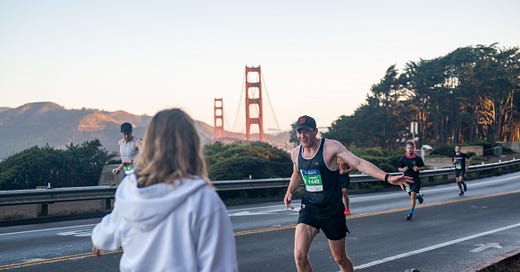


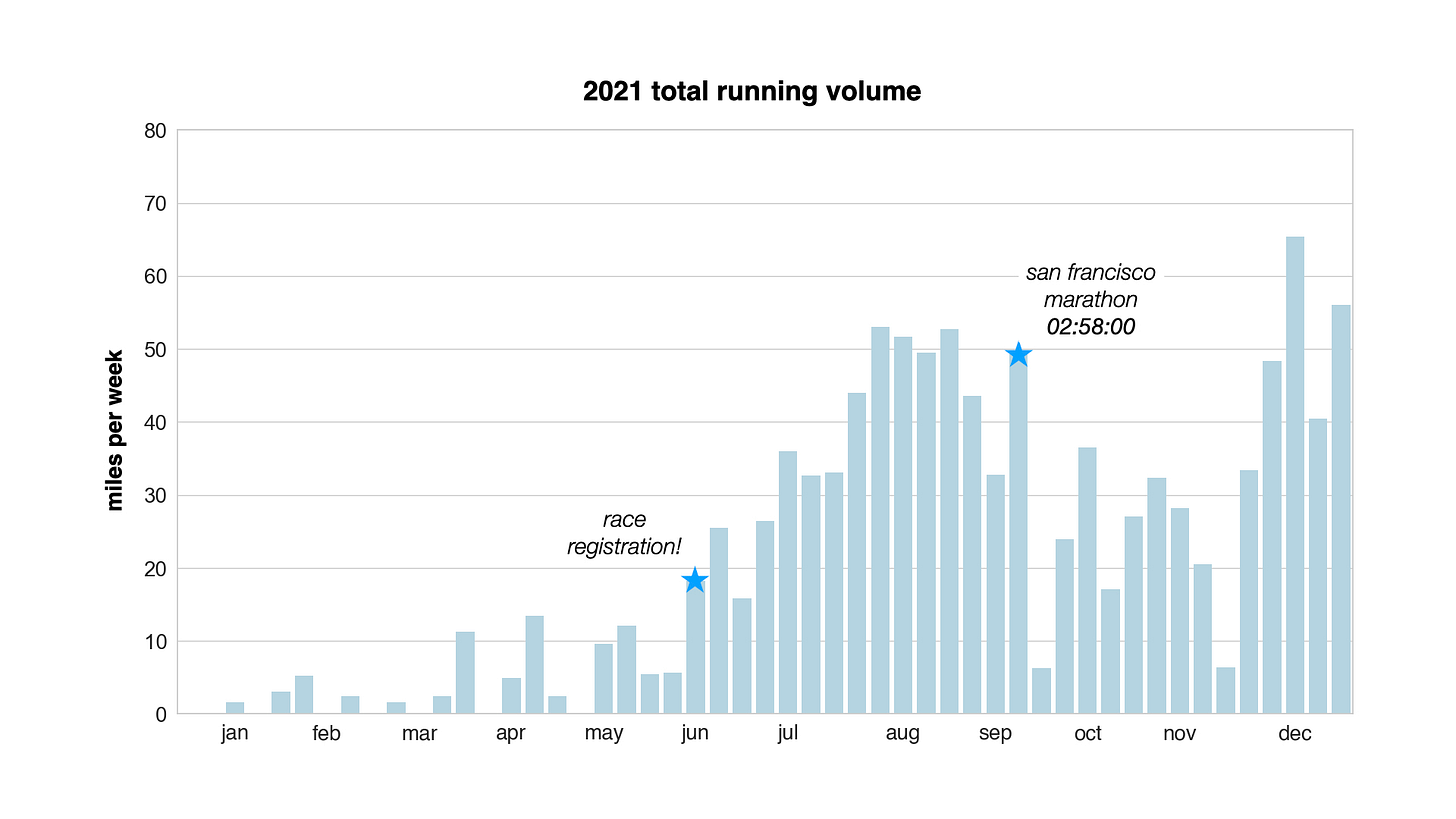

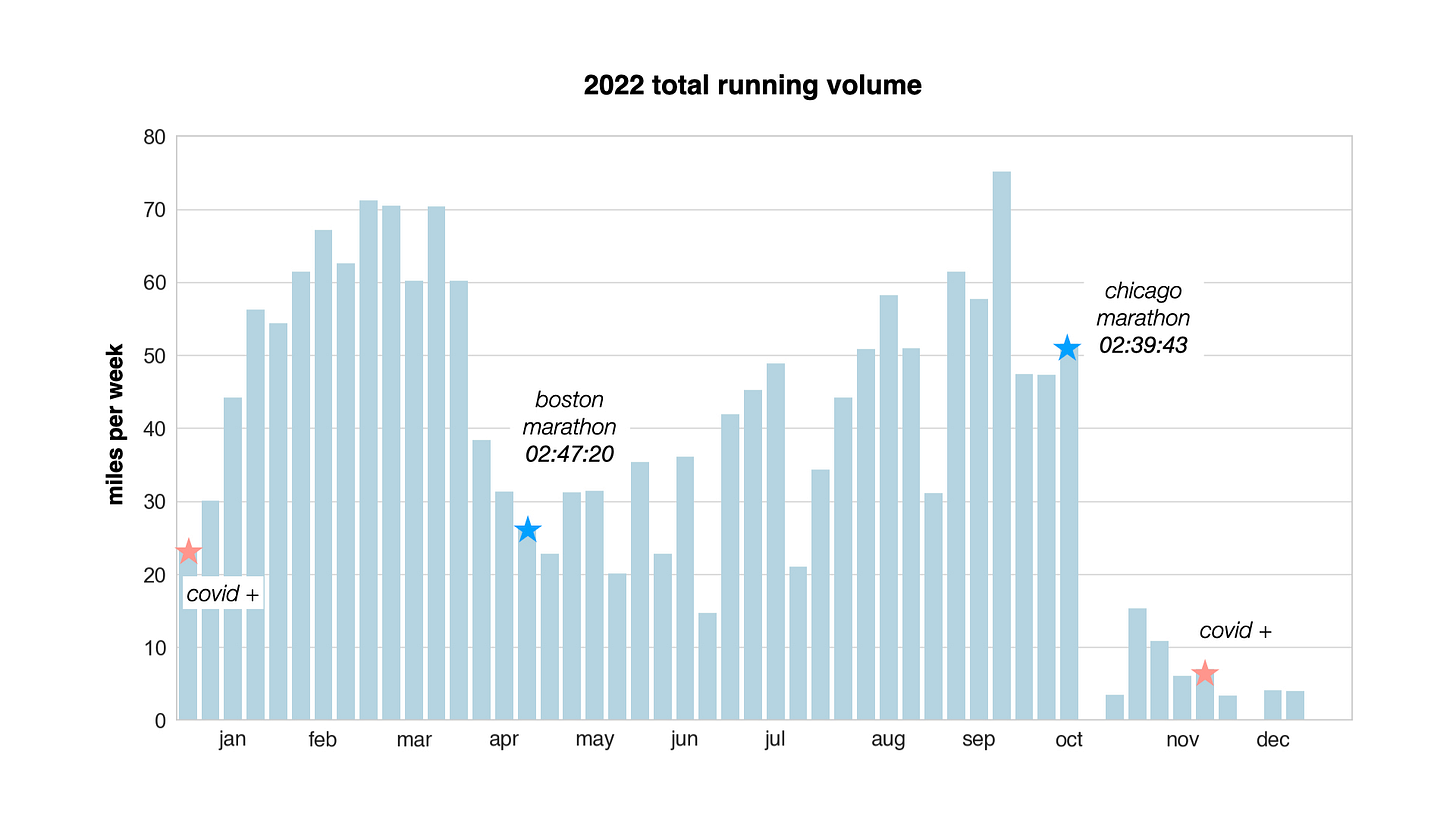

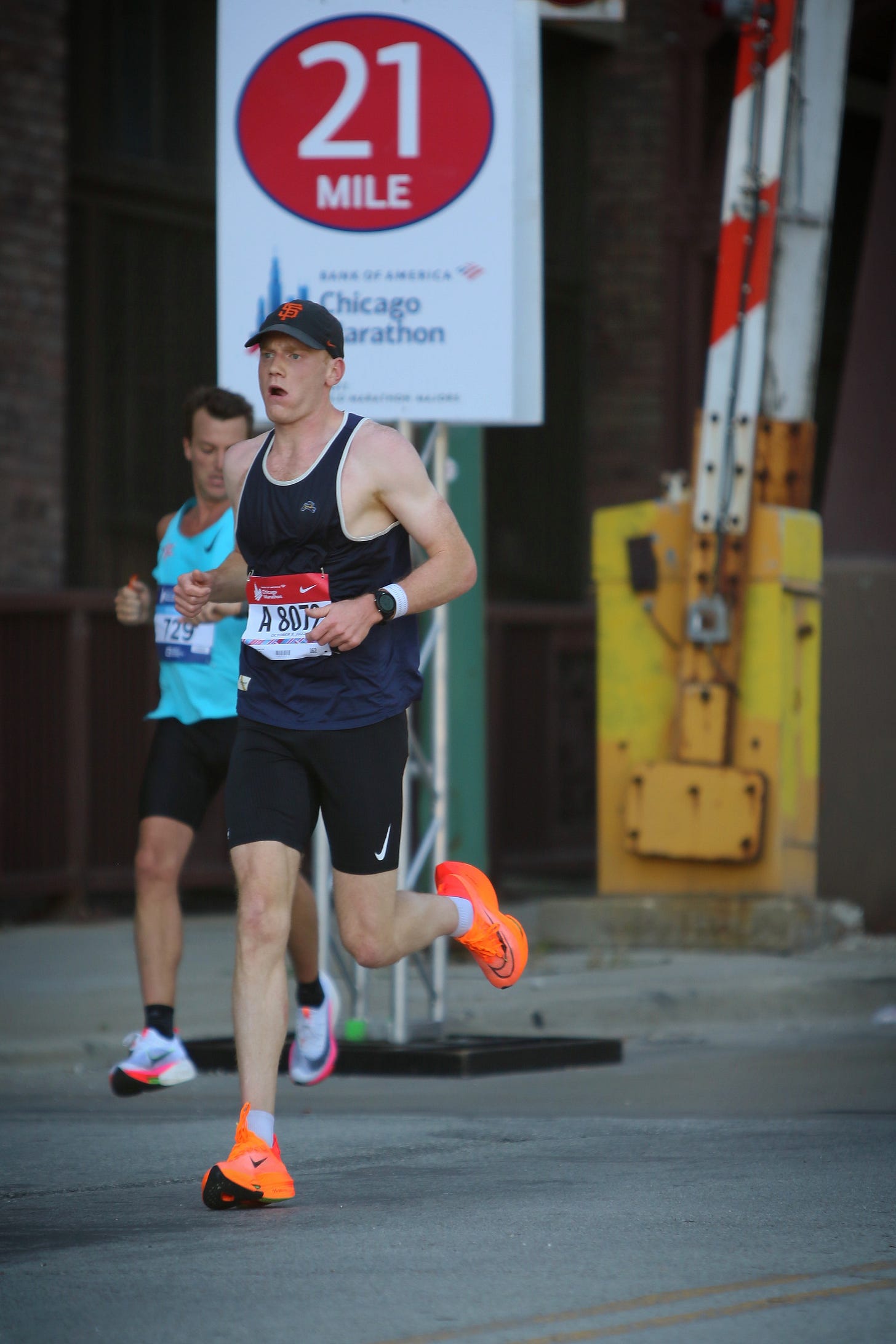


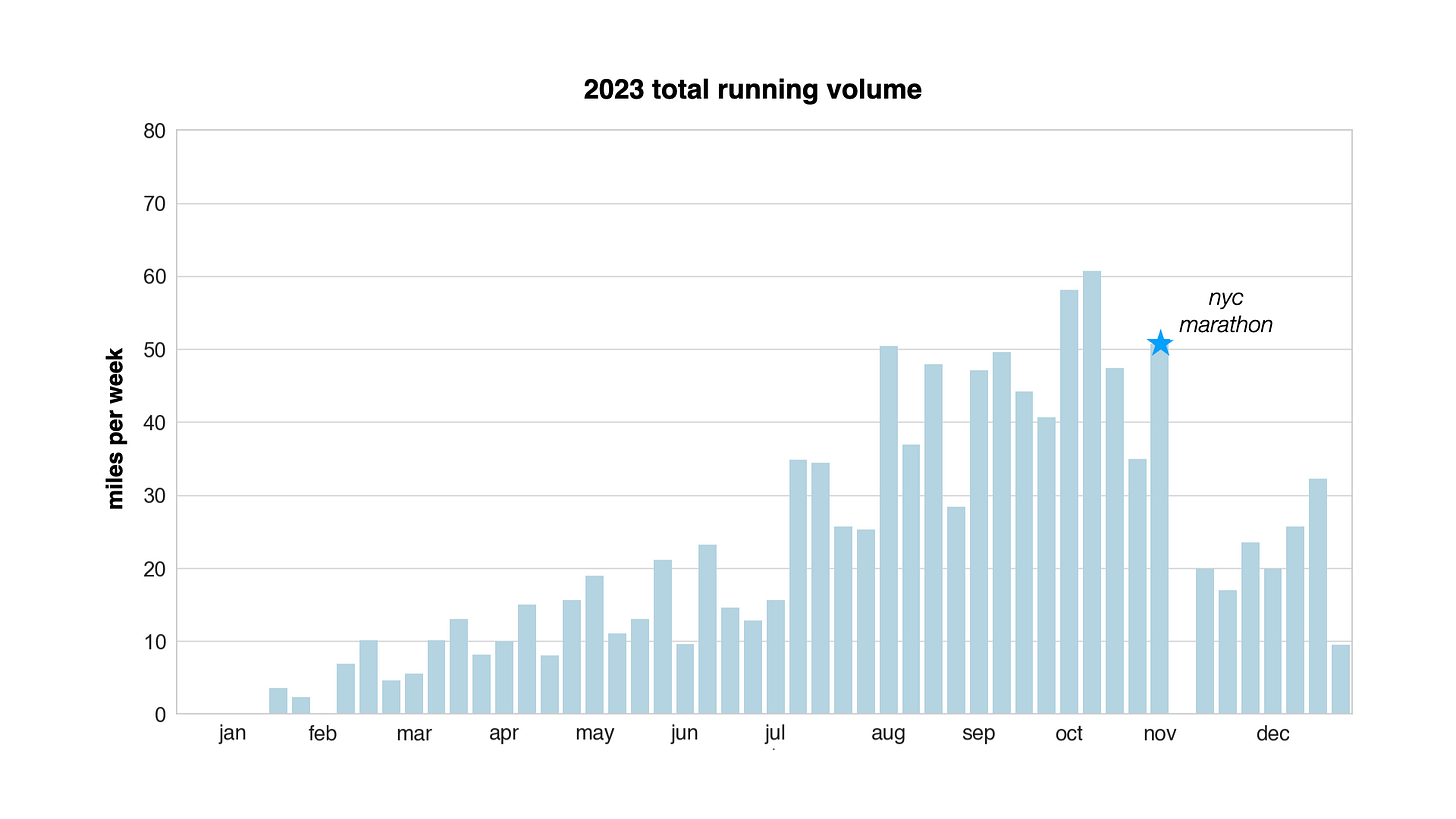
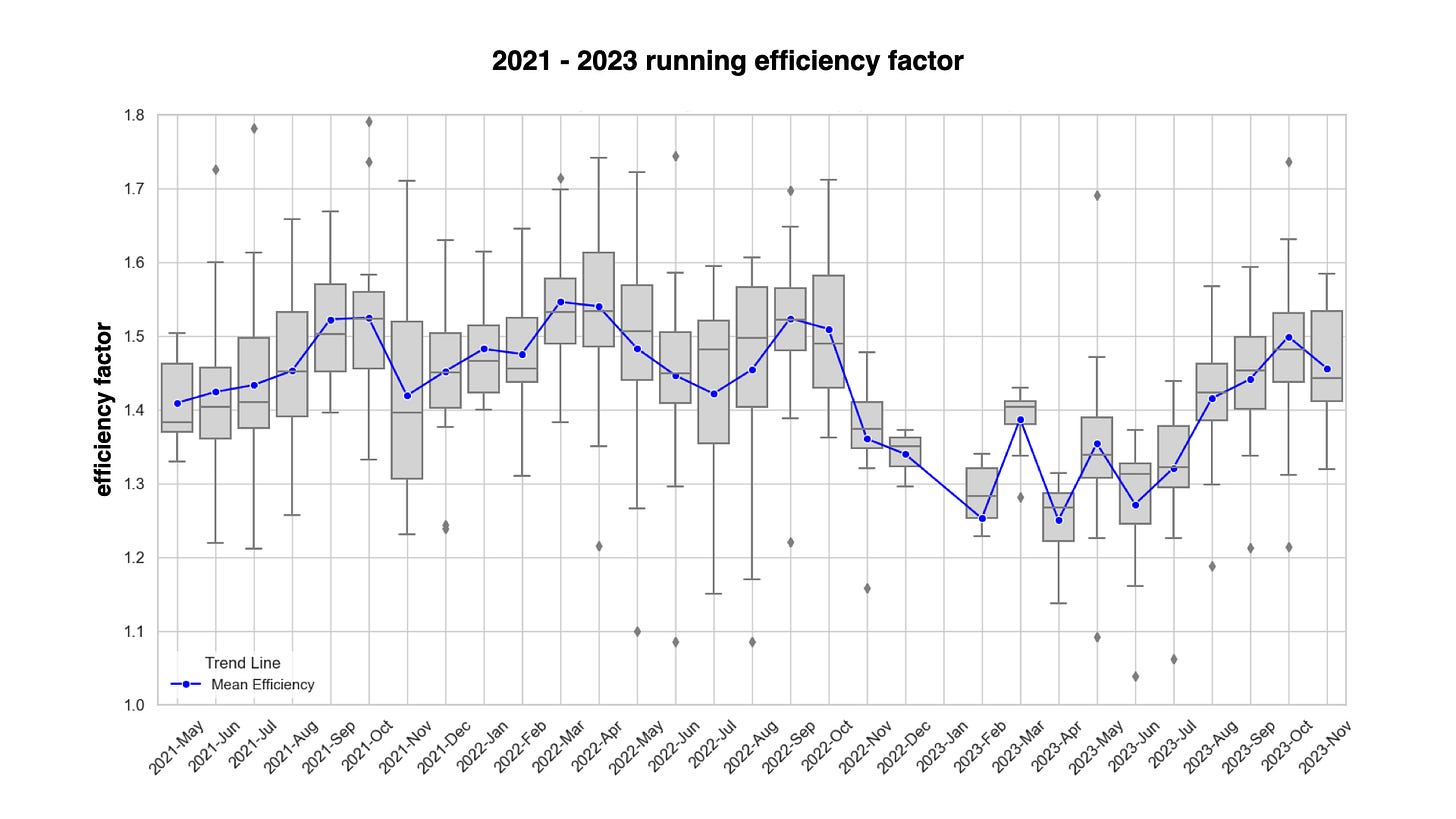


Congrats again! I'd love the part two that includes your ultra.
Wonderful, Johnny! I’m so happy that you are discovering these things at such a young age! (Happy belated birthday, btw). I started learning about this wisdom about a decade ago, and the road feels long! 😂 Long, but so gratifying. Keep up the good work and share your gifts! Sending love.